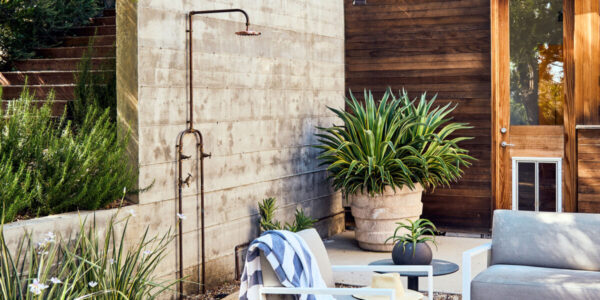
The healthiest veggies
First we heard from Hippocrates: “Let your food be your medicine.” Then our grandmothers chimed in: “Eat your vegetables; they’re good for you.” And now, seed grower Renee Shepherd advises: “The more color on your plate, the healthier your meal is.”
All of them are right: as you eat higher quantities of a wide variety of fruits and veggies, your risk of heart disease, cancer, and stroke declines. And when you grow what you eat, you can get incomparably sweet, vine-ripened produce that beats anything you can buy. Fresh really is best.
All this good news isn’t lost on plant breeders, who are developing vegetables that are higher in certain vitamins and antioxidants, such as lycopene and beta-carotene. If you include some of their offerings (many are listed on these pages) in your vegetable garden this year, you’ll eat healthier.
We polled plant breeders, seed sellers, and food scientists to learn what should go into a health-promoting vegetable garden. Then we talked with nutrition-savvy vegetable gardeners and cultivated our own garden at Sunset, including herbs to use as fresh flavorings.
Nutritionists say that you get major health benefits from eating at least five servings of fruits and vegetables per day. That sounds like a lot until you grow your own; then those servings become some of life’s delicious little pleasures.
SUMMER FRUITS AND VEGETABLES
Beans. Cooked dried beans (you can let them dry on the vine) provide protein. Fresh beans contain fiber, vitamin C, and beta-carotene. ‘Purple Peacock’ is a flavorful pole bean whose green leaves contrast with its purple pods, stems, and flowers; it’s also very heat tolerant. ‘Helda’ is a tasty Romano type of bean.
Peppers. Rich in vitamin A, peppers get even better when you allow them to ripen fully and develop their colors, which can range from yellow and red through purple. Try Jewel Tone sweet bell pepper mix.
Squash and pumpkins. Grow ‘Hi-Beta Gold’ spaghetti squash ― it has high levels of beta-carotene ― and near-black ‘Raven’ zucchini for high antioxidant levels. Winter squashes also have abundant beta-carotene. Try the mildew-resistant ‘Cornell’s Bush Delicata’ or Cornucopia Mix.
Tomatoes. ‘Health Kick’ is high in the antioxidant lycopene, while ‘Vita-Gold’ was bred for increased beta-carotene. So far, most tomatoes bred for increased nutrition are saladette types (about 4 ounces each); they tend to be less flavorful than standard tomato varieties. Use them for paste, or mix different colors of tomatoes in a salad and top with a tangy dressing. Garden Candy cherry tomato mix has seeds for gold, red, and orange cherry tomatoes, but you can easily assemble your own blend.
Watermelons. Our favorite melons for summer picnics are much more nutritious than anyone might have realized: they’re loaded with antioxidants. Rainbow Sherbet mix produces a good 4- to 7-pound fruit. The mix includes seeds for watermelons with yellow, orange, and pink flesh.
LEAF AND HEADING VEGETABLES
Broccoli. The vegetable that presidents love to hate is extremely high in nutrients overall, with plenty of vitamins A and C, as well as the antioxidant lutein. ‘Shogun’ continues to produce side heads after the main head is cut. All-Season Blend is a mix whose varieties have staggered maturity dates for an extra-long season of harvest.
Cabbage. It’s the only leaf vegetable that stores well long after harvest, and it’s packed with good things ― vitamin C, carbohydrates, and fiber. To save garden space, look for miniature varieties like ‘Arrowhead II’ and ‘Red Express’, which are the size of a large grapefruit at maturity. Among full-size cabbage, grow Savoy types.
Kale. One of the most nutritious leaf vegetables you can grow, it includes calcium, folic acid, vitamin C, and potassium. It’s at its best after frost has sweetened it. Try ‘Lacinato’ (sometimes sold as ‘Black Tuscan’ or under the nickname “dinosaur kale”), ‘Red Bor’, or ‘Winter Bor’.
Lettuce. Nutritionally, it’s a lightweight, but you benefit from its fiber. Romaine has the most nutrients.
Mesclun. “Mesclun” means “mixture,” so a mesclun blend can include any of a number of leaf vegetables, usually starting with lettuce. From a nutritional standpoint, mesclun’s diversity recommends it, and blends that include oriental vegetables or mustard and kale usually rank very high on the nutrition scale. Keep plants well watered.
Spinach. Rich in the antioxidant lutein. ‘Oriental Giant’ grows on a very large plant (double the size of conventional spinach), and its smooth leaves are perfect for salads.
Swiss chard. High in calcium and lutein. ‘Bright Lights’ is colorful.ROOT CROPS
Carrots. They’re valued for their high levels of beta-carotene (which the body uses to make vitamin A). ‘Healthmaster’ is especially packed with beta-carotene, and ‘Nutri-Red’ has an increased amount of lycopene. Sunshine Mix is colorful.
Potatoes. This staple is high in vitamin C and potassium. Potato skins are a good source of fiber. ‘Yukon Gold’ is a productive favorite, while russets have slightly higher levels of vitamin C.
